Racism and Civil Rights: Then and Now Essay
Any kind of injustice would surely disadvantage other people. When a lady is afraid to cross an alley because a Black man is standing near it or when a White policeman is stopping to check a car because the driver was a Black woman, there is always a tinge of injustice that outshines the goodwill towards other people. We come to think of how could these people have these predisposed notions about other people when their only difference is just their skin color. Indeed, racism is a societal malady that still eats up people’s minds and hearts by throwing away the essence of our differences. Racism usually results in a belief that one’s own race is superior and this is entirely caused by the human tendency to form stereotypes that are usually exaggerated characterizations based on appearance, personality, culture, and even behavior of other people.
During the 1960s, racism caused a deep wound in American history that is forever marked in the minds of all Americans. It was 1955 when a black dressmaker named Rosa Parks did not agree to provide her seat to a White man in Montgomery, Alabama. Considered as a grave offense, Parks was put in jail until she was rescued by E.D. Nixon, who was a leader of the National Association for the Advancement of Colored People (NAACP). Triggered by an outpour of emotions on how Mrs. Parks was treated, Nixon initiated a move to call all Black citizens into boycotting the unfair measures of Montgomery’s bus system. The unwarranted triumph made during the Montgomery bus boycott was a non-violent demonstration to lash out the iniquities of racial integration while getting national attention about the real score about how American civil rights are unfair to colored people.
Also, during the 1960s, Martin Luther King, Jr. emerged as a prime mover for escalating the call for equal rights. After the Montgomery incident, King led two massive racial protests in the 1960s that pushed the government to come up with major civil rights bills. With Martin Luther King’s protests, Congress was forced to enact the Civil Rights Act of 1964, which banned racial discrimination in public places. Also, the past US president Lyndon Johnson supported the demand for nondiscrimination by issuing Executive Order 11246. The racism issue had turned around the federal employment rules. Equal worker rights have been implemented in the workforces of private firms. The words of the Civil Rights Act of 1964 gave discreteness and concreteness to the constitutional guarantee of “the equal protection of the laws.”
Although present-day Black people enjoy the same rights as their White counterparts, racism still exists within our midst via racial profiling. Also called “driving while black” (DWB), racial profiling practices by the police deeply undermine basic civil rights. Racial profiling is an unjust practice of pre-textual traffic stops. This unravels the belief that the police are not only unfair and biased, but untruthful as well. Each pre-textual traffic stop involves an untruth, and both the officer and the driver recognize this. We all know that the alleged traffic violation is not the real reason that the officer has stopped the driver. Everything becomes clear when the police will interrogate the driver if he or she is carrying drugs or guns.
This is the time the police will undertake the real mission of searching the car for suspicious items. Thus, racial profiling is another form of racism that wields prejudice against Black males. The law officers might capture some felons who are guilty, but this tactic has an unacceptably high societal cost. The perception that some police officers are engaging in racial profiling has created resentment and distrust among the police force, particularly in communities of color. Communities appreciate the benefits of community enforcers in reducing crime, but they also believe that truly effective crime prevention will only be achieved when police both protect their neighborhoods from crime and respect the civil liberties of all residents. When law enforcement practices are perceived to be biassed, unfair, or disrespectful, communities of color are less willing to trust and confide in police officers, report crimes, participate in problem-solving activities, be witnesses at trials, or serve on juries.
Indeed, racism is a grave form of injustice that threatens goodwill towards other people. We all need to reflect on the lessons of the past to be able to move on in the future. As Martin Luther taught Americans how to frown upon racism, we should all embrace the full arm’s length of celebrating everyone’s diversity. We all are human beings and we need not discriminate against each other just because we look different. We can all live in harmony, only if we shake away our pre-conceived thoughts about people. By keeping our tolerance at bay and learning to respect each other’s culture, traditions, behavior, and even nuances, American society will soon reap the benefits of a safer community that is free of hatred towards other people. Racism should be a thing of the past, but people should still be vigilant about it in the future. Unless everyone would be brave enough to face the realities of racism, this injustice will not cease and people will always experience being discriminated against.
- Chicago (A-D)
- Chicago (N-B)
IvyPanda. (2021, September 28). Racism and Civil Rights: Then and Now. https://ivypanda.com/essays/racism-and-civil-rights-then-and-now/
"Racism and Civil Rights: Then and Now." IvyPanda , 28 Sept. 2021, ivypanda.com/essays/racism-and-civil-rights-then-and-now/.
IvyPanda . (2021) 'Racism and Civil Rights: Then and Now'. 28 September.
IvyPanda . 2021. "Racism and Civil Rights: Then and Now." September 28, 2021. https://ivypanda.com/essays/racism-and-civil-rights-then-and-now/.
1. IvyPanda . "Racism and Civil Rights: Then and Now." September 28, 2021. https://ivypanda.com/essays/racism-and-civil-rights-then-and-now/.
Bibliography
IvyPanda . "Racism and Civil Rights: Then and Now." September 28, 2021. https://ivypanda.com/essays/racism-and-civil-rights-then-and-now/.
- Mandatory Minimums and Three-Strike Laws
- Montgomery Bus Boycott Participant
- The Difference Between Internally Generated Goodwill and Purchased Goodwill
- How to Write and Use Goodwill Messages
- Management in the Book “The Strategist” by Cynthia Montgomery
- Richard M. Nixon and Gerald R. Ford as Presidents
- President Nixon's Impeachment After the Watergate Incident
- “Statistical Quality Control” by Diana Montgomery
- David Montgomery's “The Fall of the House of Labor”
- David Frost's New project - Interviews with Richard Nixon
- Racial Prejudice in Urban Elections
- Racism and White Supremacism in the American Government
- American Indian Removal Act
- Racial Inequality and Gangs: Issue Analysis
- Racial Inequality: An Unending Loop

Featured Topics
Featured series.
A series of random questions answered by Harvard experts.
Explore the Gazette
Read the latest.
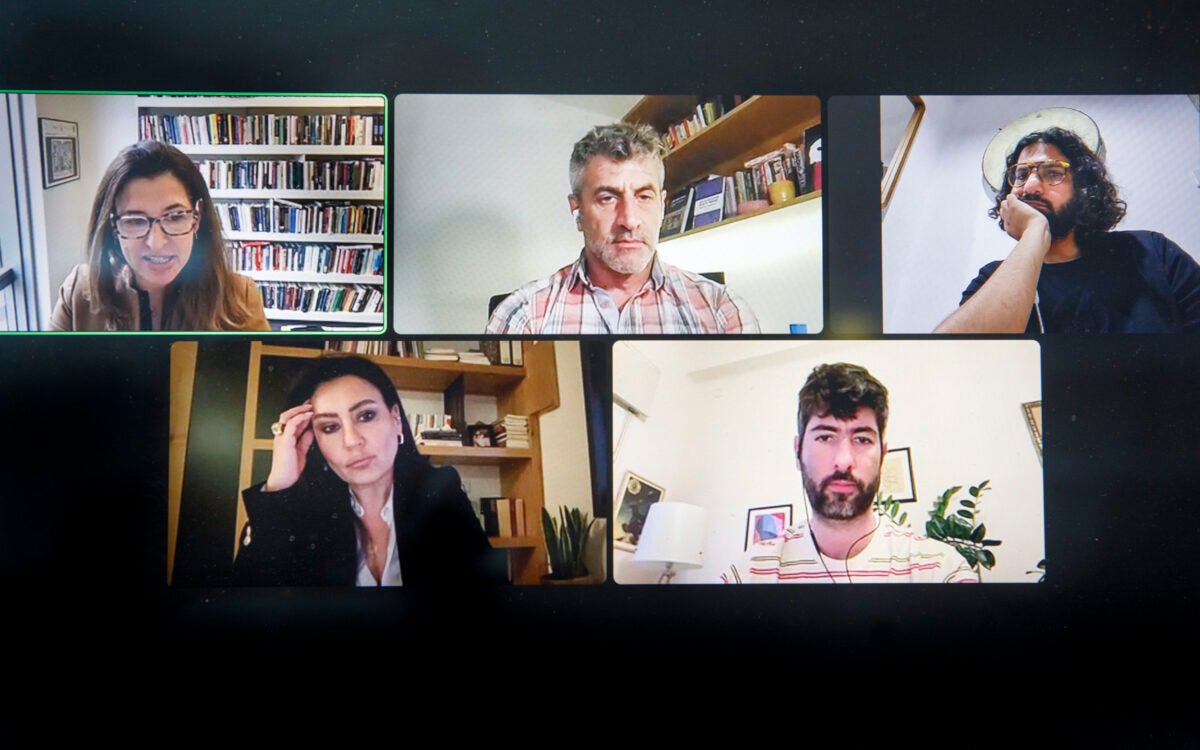
Finding middle way out of Gaza war
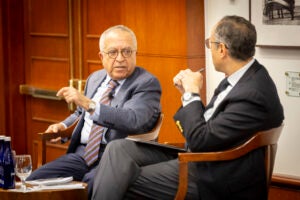
Roadmap to Gaza peace may run through Oslo
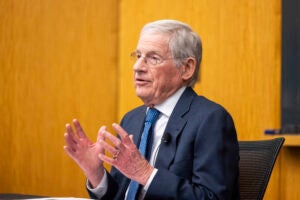
Why Democrats, Republicans, who appear at war these days, really need each other
Jamala Rogers (left) and Tef Poe were among the panelists to discuss “Generations of Struggle: St. Louis from Civil Rights to Black Lives Matter.”
Kris Snibbe/Harvard Staff Photographer

Civil rights, then and now
John Laidler
Harvard Correspondent
Through the prism of St. Louis and Ferguson, panel discusses how the movement has evolved, and where it endures
Their tones and tactics may vary, but African-American civil rights activists from different generations share plenty of common ground in their efforts to confront continuing racism across American society, speakers told a Harvard forum.
That sentiment was an overriding theme in the panel discussion on changing dynamics in the fight for black equality held Thursday at CGIS South, and presented by the Charles Warren Center for Studies in American History with support from the Hiphop Archive & Research Institute .
“We’ve got to air out the differences — that’s important. But our similarities in this case are a lot more important than our differences,” said panelist George Lipsitz, a professor in the Department of Black Studies at the University of California at Santa Barbara.
Providing introductions at the session were the center’s director, Walter Johnson, Winthrop Professor of History and of African and African American Studies, and Elizabeth Hinton, assistant professor of history and of African and African American Studies.
The discussion among three St. Louis civil rights leaders and two professors came amid surging protests nationwide against police killings of unarmed black people. Although focused on the half-century struggle for black rights in that racially divided city, the forum also touched on broader themes in the Civil Rights Movement, including some generational tensions over the more aggressive approach to change taken by some younger leaders.
Among the panelists was the rapper Tef Poe, who gained recognition last year for his widely publicized comment that this “is not your father’s Civil Rights Movement.”
A co-founder of HandsUpUnited, a protest group organized after Michael Brown was fatally shot by a policeman in Ferguson, Mo., Poe said his comment was aimed at the firm resistance the black community needed to show in response police violence.
“In St. Louis, when police kill someone of color, it’s very aggressive at the [protest] scene, and a lot of us don’t shy from the fact that it’s aggressive,” he said. “I want it to be aggressive … I want you to know that if you are going to come to one of these communities where there’s black folks and you are going to pull your gun out and you are going to shoot, you will be met with resistance.
“All too often, we’ve been told that change happens in increments … That’s fine,” Poe said. “But we are in the midst of what we are describing as a war … I can’t allow you to come in our neighborhood with a full militarized force.”
Jamala Rogers, a veteran activist who was also involved in the Ferguson protests, said activists from different generations were socialized differently.
“We know there are particularities about how we see the world and how we see the struggle,” said Rogers, whose past leadership work has included co-founding the Organization for Black Struggle. She said it was important to air those differences and for younger activists to learn from the movement’s past strengths and weaknesses.
“And we need not to be devaluing … the worth of young people,” Rogers added. “They bring a lot of energy.”
Lipsitz said there were benefits to having “different ways of solving problems.” He said each generation of black activists has in common its participation in a unique centuries-long struggle.
Percy Green II, a civil rights activist for more than half a century who has been arrested more than 100 times during protests, said civil disobedience remains an important tool to sustaining the movement.
“I might do certain things that move you a little out of your comfort zone. But it’s only when you have moved out of your comfort zone that you pay a little bit more attention to the event,” said Green, a founder of the St. Louis organization ACTION.
Poe said that those who want to work for change need to be serious about their commitment. “It’s not easy. You will have to sacrifice,” he said. “But if you really believe this is life or death, what are you going to do about it?”
Robin D.G. Kelley, a professor of history at the University of California, Los Angeles, praised Rogers and others who kept the Civil Rights Movement going during the decades when it appeared to have lost steam. He said such recognition avoids the misconception that “every movement, every eruption is a complete break.”
Kelley also saluted those behind the Ferguson protests, observing, “The sustained level of resistance was so high it became almost ground zero for the struggles around the country, if not the world.”
Share this article
You might like.
Educators, activists explore peacebuilding based on shared desires for ‘freedom and equality and independence’ at Weatherhead panel
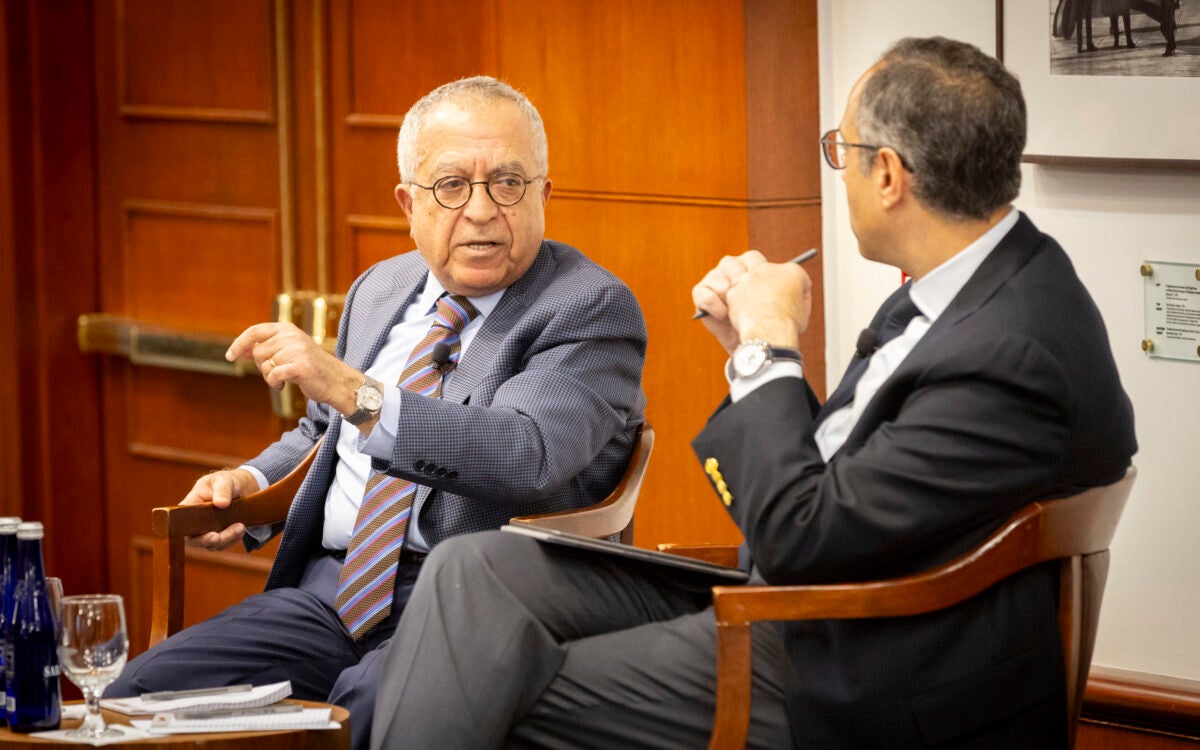
Former Palestinian Authority prime minister says strengthening execution of 1993 accords could lead to two-state solution
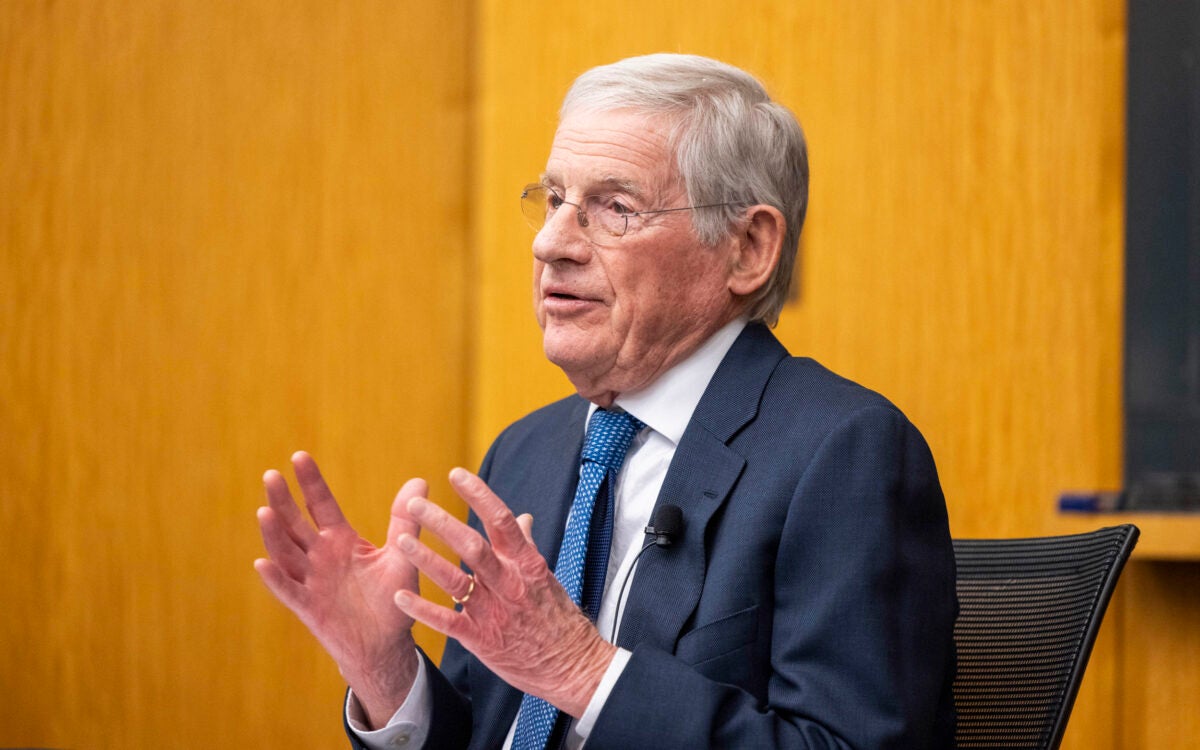
Political philosopher Harvey C. Mansfield says it all goes back to Aristotle, balance of competing ideas about common good
College accepts 1,937 to Class of 2028
Students represent 94 countries, all 50 states
Pushing back on DEI ‘orthodoxy’
Panelists support diversity efforts but worry that current model is too narrow, denying institutions the benefit of other voices, ideas
So what exactly makes Taylor Swift so great?
Experts weigh in on pop superstar's cultural and financial impact as her tours and albums continue to break records.

IMAGES
COMMENTS
Racism and Civil Rights: Then and Now Essay. Any kind of injustice would surely disadvantage other people. When a lady is afraid to cross an alley because a Black man is standing near it or when a White policeman is stopping to check a car because the driver was a Black woman, there is always a tinge of injustice that outshines the goodwill ...
The jury is being told to decide on race and personal image, rather than on the facts of the case (Lee). Racism was a larger issue back in the 1930’s than it is today. During the 1930’s many Black Americans were unable to find jobs. With the Great Depression came the “last hired first fired” mindset.
Robin D.G. Kelley, a professor of history at the University of California, Los Angeles, praised Rogers and others who kept the Civil Rights Movement going during the decades when it appeared to have lost steam. He said such recognition avoids the misconception that “every movement, every eruption is a complete break.”.
The United States also noted the heightened impact of racism on women and children. It has now been more than 50 years since the US signed the ICERD, nearly 30 years since it ratified the ...